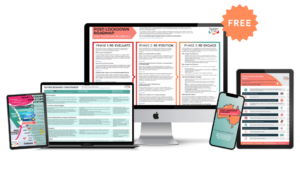In November 2023, I had the honour of delivering the keynote at the Australian Business Excellence conference in Sydney. My talk revolved around the transformative journey through the Australian Tourism Data Warehouse (ATDW), a project I led from inception and served as CEO for a decade. We discussed the transformation that was the ATDW, to AI, to Analytics and to Automation, all imperatives for the ‘growth inspired’ Australian tourism industry.
Understanding Digital Transformation
Many ponder the essence of digital transformation. Is it merely digitisation, the conversion of analog into digital? Or digitalisation, the process of employing digital tools to enhance business efficiency within an existing business model? Digital transformation transcends these concepts, encompassing strategic, organisation-wide, or even industry-wide change. It reshapes organisational culture, customer offerings, and stakeholder expectations, ultimately aiming for improved customer value and business resilience.
A Story of Pioneering Digital Transformation
Before “digital” became a buzzword, in the late ’90s, I managed the startup of what became the Australian Tourism Data Warehouse (ATDW). This initiative, envisioned by leaders of state tourism organisations and Tourism Australia, leveraged the internet’s potential to revolutionise marketing, information distribution, and consumer behavior.
The Australian Tourism Data Warehouse: A Game-Changer
The ATDW was an ambitious and successful attempt to standardise high-quality tourism content, serving as a centralised “single source of truth.” This model allowed for efficient content collection, and distribution across verified tourism websites, enabling tourism operators to provide their business information and high quality copy, images and video once, but have it distributed across multiple websites without the need for repetitive updates.
The Cultural Shift and Structural Change
Successful digital transformation requires a cultural shift, skills upscaling, collaboration, and data sharing. In the case of ATDW, fostering collaboration at all organisational levels was vital. Tourism Australia and state tourism organisations worked cohesively, reflecting the importance of cross-functional teamwork in such transformative projects. The stakeholders ongoing commitment to the vision and collaboration enable the ATDW’s continued growth and success today.

The Hallmarks of Successful Transformation
Reflecting on the ATDW journey, certain success factors stand out:
- Engaging stakeholders at all levels from the project’s inception.
- Upholding the core mission and quality standards.
- Enabling customisation for stakeholders and distributors.
- Continually evolving without compromising the core vision.
The ATDW Today: A Catalyst for Further Transformation
The ATDW has not only streamlined information distribution but has also inspired a readiness for digital transformation within the tourism industry. This preparedness is crucial in the current digital era, characterised by trends like analytics, automation, and artificial intelligence, which are now accessible to businesses of all sizes.
Empowering Small Businesses with Digital Tools
I shared examples of small businesses which have embraced analytics to refine their marketing strategies and optimise conversions. We discussed the importance of automation in email marketing and how artificial intelligence, particularly tools like Chat GPT, can enhance content creation and customer service.
Conclusion: The Human Factor in Digital Transformation
The digital transformation journey underscores the importance of the human element. It’s about achieving superior outcomes for customers and cultivating a culture that supports people throughout the transformation. As we embrace high-tech solutions, the integration of a human touch remains paramount.




